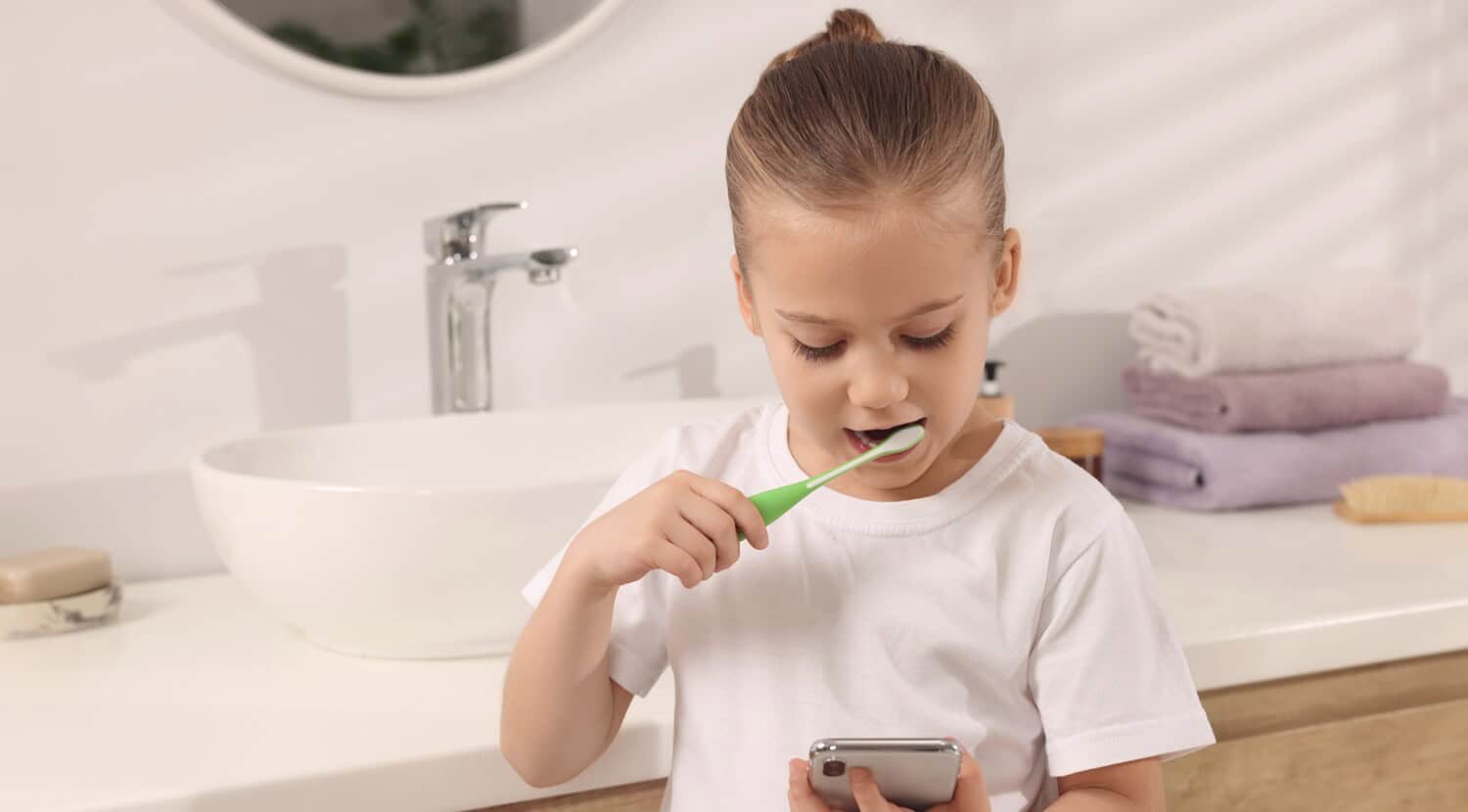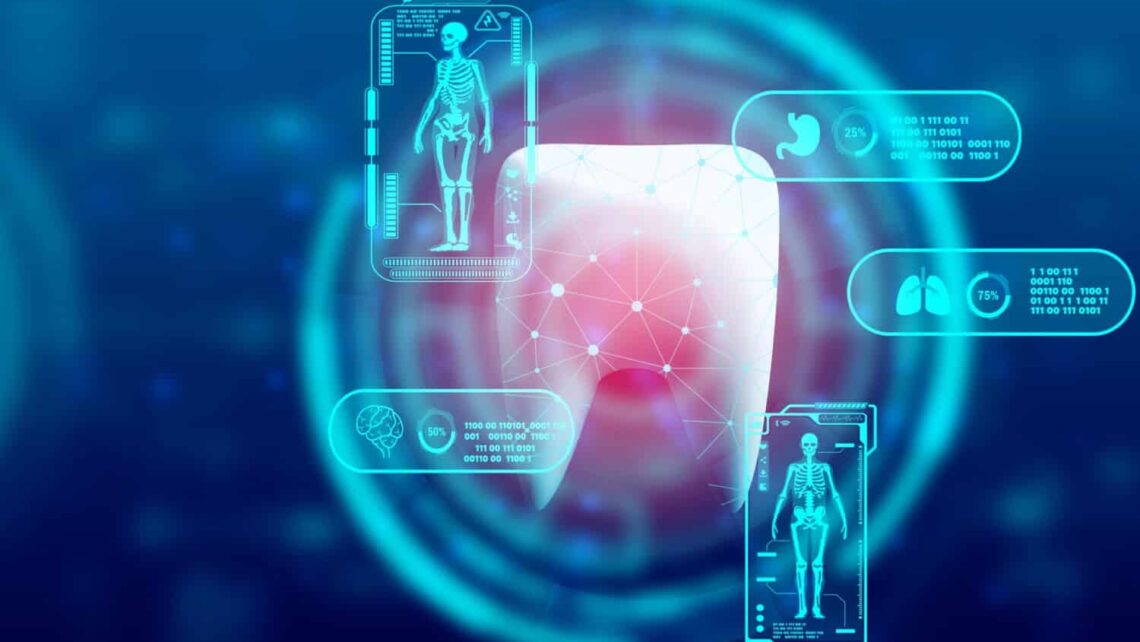Dentistry is undergoing a major transformation, driven by a wave of innovative technologies. This digital revolution is not only reshaping how dentists diagnose and treat patients, but also paving the way for a future of personalised, preventative, and minimal invasive care.
This article delves into five key trends that are redefining the dental experience:
Regenerative Dentistry: Rejuvenating Smiles
For decades, dentistry has relied heavily on restorative techniques to address tooth decay and damage. However, regenerative dentistry¹ presents a paradigm shift. This emerging field focuses on harnessing the body’s natural healing potential to regenerate lost or damaged tooth structures.
One promising avenue lies in stem cell therapy. Researchers are exploring the possibility of using a patient’s own stem cells to stimulate the growth of new dentin, the layer beneath the enamel. This could eliminate the need for traditional fillings and potentially lead to self-repairing teeth.
Artificial Intelligence: Empowering Diagnostics and Treatment
Artificial intelligence (AI) is rapidly transforming the healthcare sector, and dentistry is no exception. AI algorithms are being trained on vast datasets of dental images and patient records, enabling them to analyse X-rays, CT scans, and oral photographs with exceptional accuracy.
These AI-powered tools can assist dentists in:
Early cavity detection: By identifying subtle patterns invisible to the human eye, AI can help detect cavities at their earliest stages, allowing for minimal invasive treatment.
Improved treatment planning: AI can analyse complex data sets and recommend personalised treatment plans tailored to each patient’s unique needs and anatomy.
Risk assessment: AI algorithms can analyse a patient’s medical history and dental data to predict their risk of developing future problems, facilitating preventative measures.

The Rise of Smart Dental Devices: Brushing Gets a Tech Upgrade
The humble toothbrush has undergone a significant evolution, transforming into a sophisticated tool for oral hygiene. Smart electric toothbrushes are equipped with built-in sensors and Bluetooth connectivity that track brushing habits and provide real-time feedback. These features can significantly elevate the cleaning efficacy of brushing, ensuring patients reach all areas of their mouth and apply optimal pressure.
Furthermore, smart toothbrushes can connect to mobile apps that offer personalised brushing routines, monitor progress over time, and even elevate the brushing experience for a more engaging approach to oral care.
Tele-dentistry: Expanding Access to Care
Tele-dentistry leverages telecommunications technology to deliver remote dental consultations, education, and even some forms of treatment. This innovation has emerged as a valuable tool, particularly during the COVID-19 pandemic, offering several advantages:
Increased accessibility: Tele-dentistry bridges geographical barriers, making dental care more accessible for people in remote areas or those with limited mobility. This is especially true in Australia where professional dental facilities in remote areas of the country are almost negligible.
Enhanced convenience: Patients can schedule appointments at their own convenience, eliminating the need for travel and long wait times in waiting rooms.
Cost-effective solutions: Virtual consultations can be a more affordable option for patients seeking preliminary screenings or follow-up appointments.
While tele-dentistry cannot replace in-person visits for all procedures, it offers a valuable tool for initial consultations, post-operative monitoring, and preventative care education.

Intra-Oral Cameras: Illuminating Hidden Problems
Intra-oral cameras are miniature, pen-shaped devices equipped with high-resolution cameras that provide dentists with a magnified view of the oral cavity.
These cameras offer several benefits:
Enhanced visualisation: Unlike traditional mirrors, intra-oral cameras can capture clear images and videos of hard-to-reach areas like the back of the mouth, allowing dentists to detect hidden cavities, gum disease, and other potential problems.
Improved patient communication: Real-time visuals on a monitor enable dentists to easily explain diagnoses and treatment plans to patients, fostering better understanding and shared decision-making.
Painless and radiation-free: Unlike X-rays, intra-oral cameras are painless and do not expose patients to radiation, making them a safe and comfortable diagnostic tool.
In conclusion, the dental industry is witnessing a dynamic shift towards a technology-driven future. From the regenerative potential of stem cells to the diagnostic prowess of AI, these advancements hold immense promise for personalised, preventative, and minimally invasive dental care. As these technologies continue to evolve and integrate into mainstream practice, patients can expect a significantly enhanced dental experience.
¹ Regenerative dentistry:
- National Institute of Dental and Craniofacial Research (NIDCR): https://www.nidcr.nih.gov/
- Journal of Dental Research (JDR): https://journals.sagepub.com/home/jdr
- The Alliance for Regenerative Medicine (ARM): https://alliancerm.org/
Want to book an appointment?
Book online by clicking here. Call our friendly team on 3390 6100 or email us.












Leave a Comment